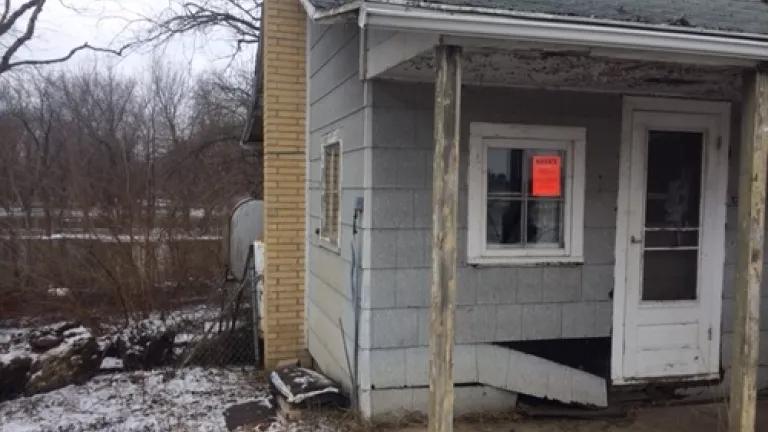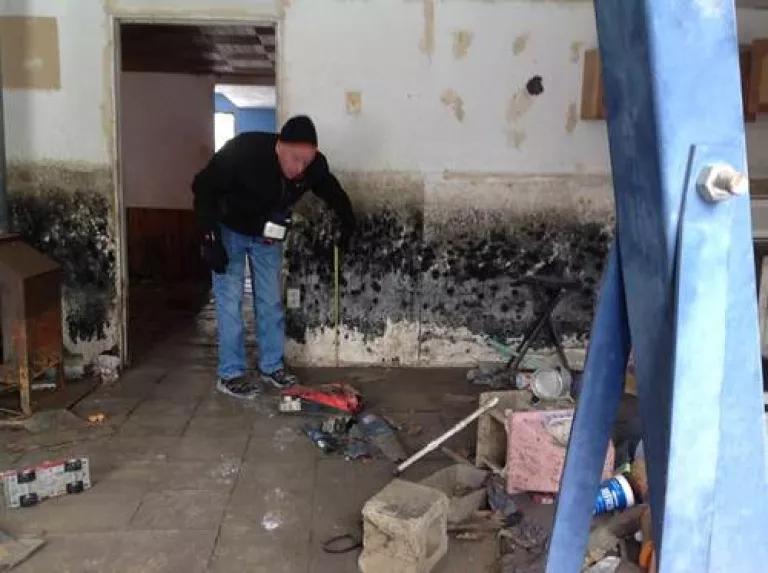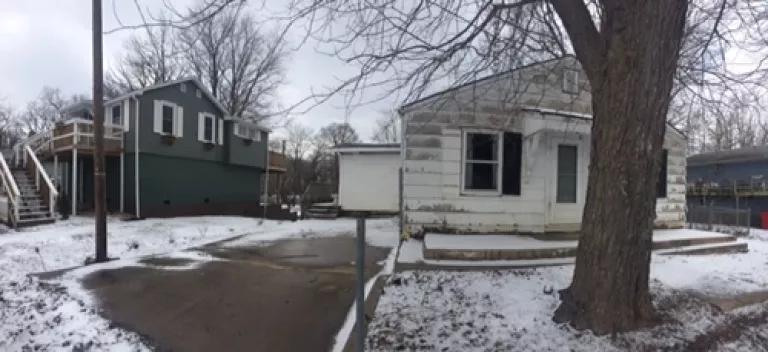
In late December and early January, the Midwest was hit with intense storms that caused the Mississippi and Illinois Rivers to rise. Ten inches of rain fell on the Midwest in three days, sending record-breaking floods through Illinois and Missouri, killing 25 people and causing more than $1 billion in damages.
Mason County, Illinois was one place hit hard by these floods. About 4 weeks after floodwaters peaked, the Illinois Association for Stormwater and Floodplain Mangement deployed a team of volunteer floodplain professionals to the area around Havana, Illinois to give their overwhelmed colleague in Mason County help in assessing the damage to nearly 100 properties.
I was lucky enough to join that team and see the important first steps that state and local officials are supposed to take in a flood's aftermath. In particular, I wanted to observe what went into deciding whether a house is substantially damaged or "red-tagged", a term that refers to the bright red sticker put on homes that are so seriously damaged by flooding that simply rebuilding is not an option and remedial actions are needed. It should be noted that winter floods are not the norm in the Midwest. Winter is a time when river levels are usually at their lowest and floods are exceedingly rare. In the Midwest only 4.4 percent of flood disasters are declared in December and 2.6 percent in January. Most floods happen in spring and early summer, when heavy rains are more common. But this past winter, record and near-record flood elevations were registered throughout the region.
I pulled into Havana, the county seat, and met the members of the damage assessment team at the local volunteer fire department. Among the team were the state's floodplain manager, a handful of other state flood experts, the Mason County floodplain manager (who's full-time job is with the fire department) and two local floodplain officials from Ottawa and Watseka, Illinois.
I asked these last two gentlemen why they'd come all the way to Havana to help out. Their answers were roughly the same: they knew what it was like to deal with all the post disaster work that's needed. Both of them had been in the same situation and had gotten similar help in the past, so they were returning the favor now.
This made a big impression on me. All the people there that day were taking time away from their day-to-day responsibilities and working on a state holiday to do the inglorious work of flood mitigation. These are dedicated public servants that understand just how important it is to properly deal with the aftermath of a flood.
With snow and ice covering ground that had been under 2-3 feet of water just a few weeks earlier, we split into two teams and headed out. Each team inspected homes that Mason County officials earlier identified as being heavily damaged. Typically, while flood waters are still in people's homes, local officials will do drive-by surveys (or by boat, if needed) and note which homes have standing water in them and warrant a closer look later.

Black mold coats the walls of a home in Mason County, Illinois that flooded in January 2016's record floods.
At each house a team would do a rapid assessment of flood damages, estimating how high flood waters were (you can usually find a clear high water line on the outside of the house, where the muddy water crested or, if the windows are open, you can see the same line on the inside), measuring for the rough square footage of the home, and taking notes on the construction of the home (is it a wood frame house, built on a concrete slab or on a foundation, how high of a foundation, etc...). All of this information was later used to estimate the dollar amount of damage, using a FEMA-designed software package. Many of these homes had pretty obvious signs of damage. Mold grew on the walls in some, and soggy furniture, insulation and carpeting were on the front lawn. For a couple, their decks had been ripped away or twisted askew by floodwaters.

If an inspection revealed significant damage, the officials stuck a bright red notice on the door. Getting "red-tagged" means homeowners cannot repair the house until consulting with county officials. If it's determined that the damage exceeds half the home's value, there's a local and federal requirement for action to be taken. That usually means elevating a house on stilts or raising its foundation, because the property can't simply be left to flood again. In Illinois, most communities also have a cumulative standard for tallying damages. This means it doesn't have to be a single flood that causes this amount of damage, but the threshold for mitigation action is reached when the sum of all past flood damages exceed half a home's value.
The work was completed just three months before this winter's flood, and the couple watched the rising waters from the safety of their elevated home. When I visited them, they had enjoyed the morning watching a bald eagle fly back-and-forth above the Illinois River backwater behind their elevated home.

The home on the left was damaged in 2013 and elevated in October by about 8 feet. It was high and dry for January's floods. The home on the right was damaged in 2013 and later got "red-tagged" from damage it sustained in January.
This couple benefitted from some lucky timing, but also from policies that encourage people to think carefully about mounting flood risk. These damage assessments are important to conduct. They allow officials to not only identify properties that are vulnerable to repeated damage, but to start a conversation with homeowners about safer options for rebuilding, or better yet, relocating. NRDC wants to see this conversation happen far more frequently, particularly in coastal areas that are increasingly vulnerable to sea level rise.
These floods come at an interesting time. Congress will start to debate much needed reforms to the National Flood Insurance Program, which NRDC thinks are essential if we're going to help people relocate away from areas vulnerable to rising sea levels and more frequent flooding. And these floods come just as federal agencies are beginning to implement new federal flood protection standards.
Climate change will only exacerbate the United States' vulnerability to disastrous flooding. Increasingly intense storms will make flooding more likely along our rivers. And sea level rise makes coastal flooding not only more likely, but inevitable for millions of people across the country. It's high time that we rethink how we rebound from flood disasters and how we plan for future ones.

